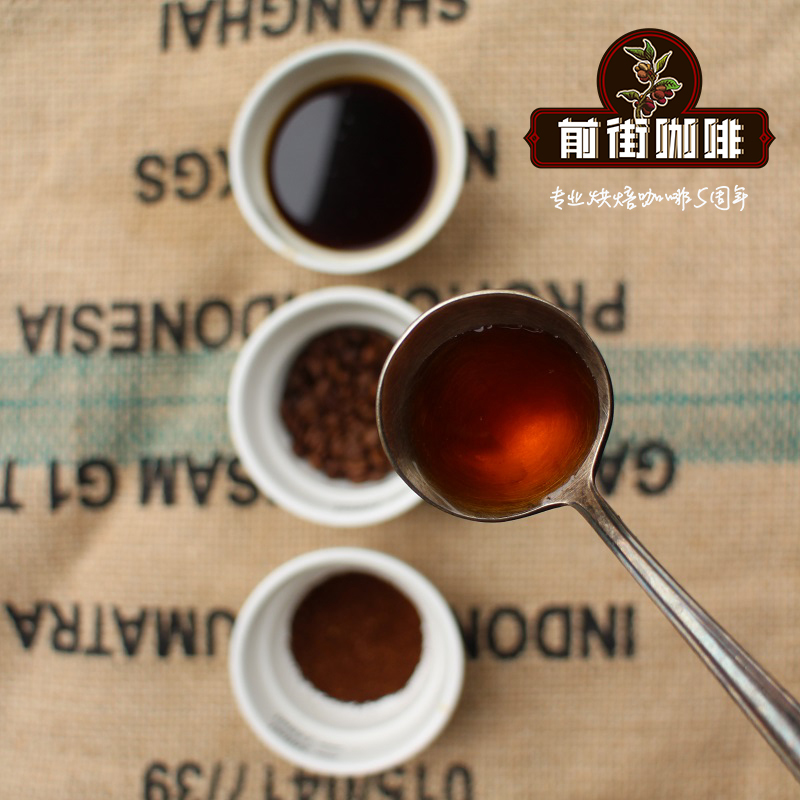What is the meaning of coffee CM treatment? characteristics of flavor and taste of coffee beans treated with carbon dioxide impregnation

Professional coffee knowledge exchange more coffee bean information please follow the coffee workshop (Wechat official account cafe_style)
When it comes to the treatment of coffee, in addition to the sun, water washing, honey treatment, wet planing method, in recent years, there is also a method called CM treatment. What is the CM treatment?
There are many ways to treat coffee beans, although beans determine the genes of coffee, but different treatments can give coffee beans a completely different flavor trend. There is no doubt that the most popular treatment at this stage is "anaerobic fermentation".
In recent years, the "anaerobic fermented" coffee beans have shone brilliantly on the stage of the WBC finals, and CM has almost become a synonym for "match beans". Five of the top six contestants in the 2018 WBC chose "anaerobic fermented" coffee beans as their "weapons".
"carbon dioxide impregnation treatment", English for Carbonic Maceration, referred to as "CM treatment".
CM treatment can give coffee a more complex aroma and reduce the sharp acetic acid taste.
The CM process itself has been evolving since its birth, and its successful evolution is best demonstrated by its two world championships in 15 and 18 years respectively.
Fermentation can improve the quality of coffee, but in some cases it lowers the cup test score by at least 8 points. Especially when we test the cup of boutique coffee with a score of 80-92, 8 points is a big difference.
Fermentation is a scientific explanation that involves the metabolic process and the energy release of organic molecules in the absence of oxygen. In food and beverage production, fermentation is used to indicate changes in food in the presence of microorganisms such as bacteria or yeast, which can lead to the production of ethanol (alcohol), carbon dioxide and / or lactic acid and acetic acid. In short, fermentation refers to the decomposition of sugar and starch into acid or alcohol.
Yeasts and bacteria are important for fermentation. Yeast is a microorganism, a natural wild yeast found in grapes, cocoa beans and other fruits. It appears in the processing of wine, cocoa and coffee beans. Bacteria are called Lactobacillus.
Fermented ingredients
Basically all coffee beans undergo a certain degree of fermentation in the process of treatment. Almost all washed coffee beans go through a deliberate fermentation stage, and the seeds of the coffee fruit are usually fermented overnight after peeling. Sometimes it is put in water before washing, channel grading and drying. Soaking the fermented coffee beans in water will reduce the number of microorganisms, but the fermentation will continue during the soaking stage.
Sun-dried or peeled honey-treated sun-dried coffee beans will also produce external fermentation. When the mucus inside the fruit or on the outside of the coffee bean is dry, as the coffee bean dries, the microbes actively digest the sugar in the fruit and change the flavor of the coffee bean.
Unlike winemakers who use yeast strains in wine fermentation, farmers ferment coffee beans with their own microbes and yeasts. At this point, the fermentation of coffee beans is more similar to cocoa. There are inherent microorganisms in many coffee beans with unique flavor of origin. After fermentation, these natural ingredients affected by wind soil and cultivated varieties play an important role in flavor performance.
There is no perfect variety of coffee, and there is no perfect process, but if we can better understand the flavor complexity of different varieties of coffee beans and their advantages and disadvantages, as well as the CM process or other possibilities for controlling fermentation, we can try to emphasize the strengths of these beans and improve their weaknesses. Once we have the perfect fermentation formula, we can have the ability and technology to replicate this flavor.
END
Important Notice :
前街咖啡 FrontStreet Coffee has moved to new addredd:
FrontStreet Coffee Address: 315,Donghua East Road,GuangZhou
Tel:020 38364473
- Prev

What is the XO treatment of beans for the champion of 2018WBC? introduction to XO treatment of Coffee
Professional coffee knowledge exchange more coffee bean information please follow the coffee workshop (Wechat official account cafe_style) in the coffee competition of WBC, the coffee treatment used by the runner-up winner Lex Wenneker makes the front street coffee curious. The coffee beans used in the Lex Wenneker competition are Columbia Hope Manor (Granja La Esperanza) Blue Hill Manor (
- Next

Which is better to wash coffee beans or to treat them in the sun | analyze the different characteristics of washed beans and sun-dried beans.
Professional coffee knowledge exchange more coffee bean information Please pay attention to the coffee workshop (Wechat official account cafe_style) where the flavor of coffee comes from, is the unique flavor given by coffee treatment. As a means of giving coffee flavor, coffee treatment is a means with value-added function, and it can be dealt with according to different situations. Sun will be used in areas where there is a shortage of water.
Related
- What is the meaning of lactic acid fermentation with coffee bean treatment?
- How to judge the state of foam by sound?
- How does the latte pull out the unicorn pattern? Come to get for a little trick to improve the flower pull!
- Will flower pulling affect the taste of the latte?
- Do you know the history of coffee?
- The difference between honey treatment and sun washing what is raisin honey treatment?
- What kind of milk can a novice use to make coffee foam to keep the foam longer? The correct method and skills of milking tutorial sharing
- Why do washed coffee beans taste sour? Flavor characteristics of washed Coffee
- Introduction to the skill of how to practice the size and height of water injection around the circle of hand-brewed coffee
- How do beginners practice coffee flower drawing from scratch?

